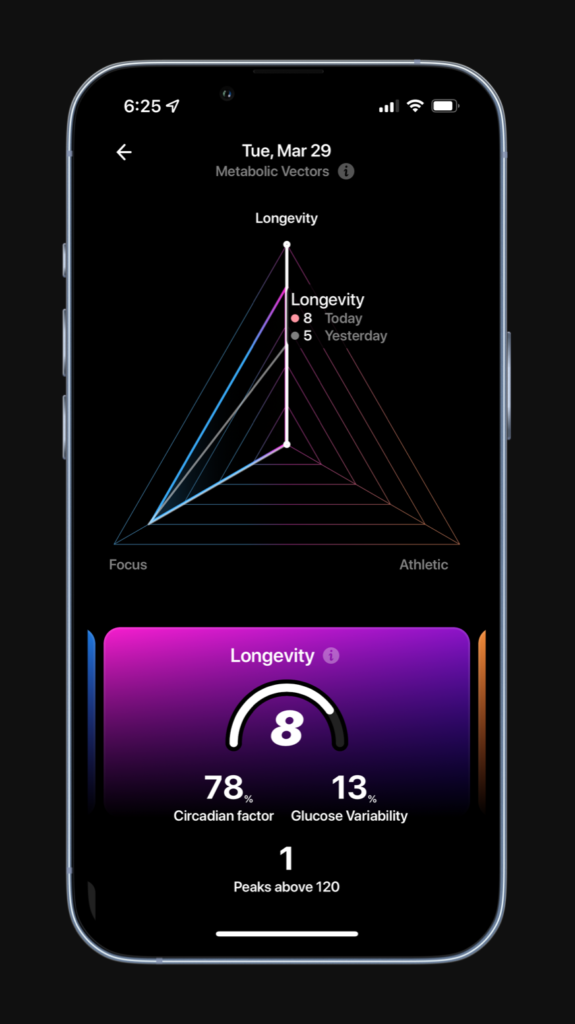Is blood glucose monitoring the newest craze among athletes? Customers can purchase intrusive sensors from Ultrahuman to be implanted into their arms, where they will use a smart app to continuously check their blood glucose levels. The ultimate result is real-time advice on how to improve one’s lifestyle, together with a vast ecosystem of knowledge relating to metabolic health. After testing the Ultrahuman M1 for two weeks, we’d like to talk about how our lives have changed.
Ultrahuman uses Abbott’s Freestyle Libre 2, which has been on the market since 2019, as its glucose sensor. Additionally, many diabetics use it to keep an eye on their blood glucose levels. There is nothing to worry about because the technology is tried and true, right? However, I find it unsettling to imagine a thin, flexible filament in my skin.

It goes without saying that I had mixed emotions before to the cyborg experiment, especially since I had already looked at too many images of the sensor. I’ll leave it up to you to decide if that’s fortunate or not.
So I worked up the confidence to insert the chip into my arm after putting the sensor in the applicator. Just how did I feel? Absolutely nothing! I was a little concerned about the needle being trapped somewhere during the first two days, especially at night. But in daily life, neither when exercising nor while sleeping, I was unaware of the 0.4-millimetre thin filament in my skin. I only ever got caught on the couch once, giving me a brief feeling of being bitten by an insect. Overall, my fears were unjustified, and Ultrahuman also provides strong plasters to protect the sensor.
By tapping my new sticker with the phone, the sensor and app were first paired. The app cautioned me that the readings could be erroneous for the first 24 hours, but it held me in suspense for another two hours while waiting for the sensor to be fully calibrated. I encountered zero connectivity issues with the sensor and smartphone throughout the review period.
Using a chocolate bar in between meals to circumvent the calorie counter app is more difficult with Ultrahuman. Any food with a significant amount of sugar, even a few grapes or two figs, will cause the Ultrahuman app to send a push notification: “Your blood sugar is currently increasing. What did you consume?”
Now, the software assigns a score to each food item depending on how it affects blood sugar levels. The software uses your personal top lists of the greatest and worst foods to create the best food lists for you. The intriguing aspect of this is how various foods cause varied reactions in various bodies. For one person, what is healthy may induce blood sugar spikes and crashes in another.
Score and Metabolic Vectors
The Ultrahuman app assigns a score between 1 and 100 to each day based on measured data, tracked activities, and diet. Of course, the crucial factor in this situation is the percentage of the day that you spend within the desirable blood glucose range of 70 to 110 mg/dL. However, it’s also crucial to prevent peaks and valleys in the level; a smooth uphill and downward gradient is optimal.

How can this be done? The software continuously explains everything while in use and offers fresh suggestions. For instance, if there is a surge, the app suggests taking a walk after eating or taking a tablespoon of apple cider vinegar first.
The programme also contains metabolic vectors in addition to the daily score. This depiction of your performance in the three categories of focus, longevity, and athleticism. The less your blood sugar fluctuates, the more focused you are. Your longevity increases with the number of peaks and the amount of time your blood sugar is at its ideal level. And it’s obvious that consistent exercise and healthy blood sugar levels are beneficial for your athletic score.
Additionally, you’ll receive an estimate of your daily HbA1c level, which can help determine if you have diabetes, prediabetes, or neither. The app provides daily tests as well as long-term averages and a summary of your metabolic fitness.
Conclusion
Two weeks spent living as a cyborg
The sensor stopped functioning as expected and stopped producing results exactly two weeks later. I feel like I’ve been robbed of a sense since this shelf life is restricted for hygiene reasons. My body served as a laboratory for two weeks, and the results motivated me more than wearing any other fitness tracker before to be disciplined about exercise and especially food.
I consider the Ultrahuman M1 to be one of the most exciting technological advancements of the last 15 years, and I’m really interested in how blood glucose monitors will become more widely used and advance our understanding of nutrition and fitness in the next years. The utility of fitness wearables will advance dramatically at the latest when blood glucose testing operates with adequate optical precision and hence becomes slightly more accessible to the general public.


